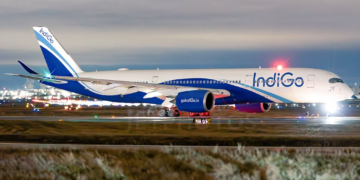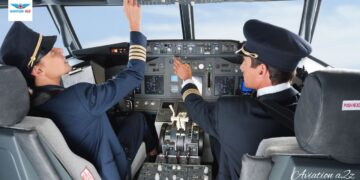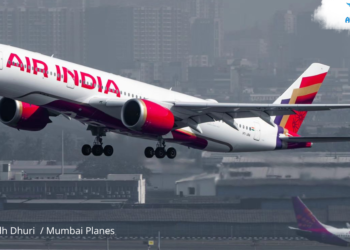The Chinese jet flew within 20 feet of the nose of an American military aircraft over the South China Sea this month, almost causing a collision, the U.S. military stated.
U.S. Air Force aircraft
The U.S. military told on Thursday, December 29, 2022, that a Chinese fighter jet flew dangerously close to a U.S. Air Force aircraft that was conducting routine operations over the South China Sea on Dec. 21, nearly causing the planes to collide.

The Chinese pilot of a J-11 jet “performed an unsafe maneuver,” flying in front and within 20 feet of the nose of a U.S. Air Force RC-135 plane, the U.S. military stated in a report, adding that the American pilot was forced to take “evasive maneuvers to avoid a collision.”
United States Armed Forces
The U.S. Indo-Pacific Command, which is part of the United States Armed Forces, stated in a report on Thursday that it expected all states in the region “to use international airspace safely and by international law.”
A spokesperson for the command, referring to China’s People’s Liberation Army by its initials, also stated in an email: “We have seen an alarming increase in the number of unsafe aerial intercepts and confrontations at sea by P.L.A. aircraft and vessels.
“So this latest incident reflects a concerning trend of unsafe and dangerous intercept practices by the P.L.A. that are of grave concern to the United States.” As to why the American military waited 8 days to publicize the encounter, another representative said, “Disclosure of this type takes time to verify details, obtain and declassify imagery and make proper information to other government agencies.”
Also, read
- Plane Crashes Into Power Transmission Tower In Us, Cuts Off Electricity For 80,000 Residents | Exclusive
- Unaware of her pregnancy, a KLM passenger gives birth in the plane bathroom | Exclusive
- New TATA Air India to Merge LCCs AirAsia India under One Air India Express, Aloke Singh will become CEO | Exclusive
In Beijing on Friday, December 30, 2022, a spokesman for the Foreign Ministry did not directly answer to the question of whether a Chinese jet had operated dangerously. The spokesman, Wang Wenbin, instead pointed a finger at the United States for conducting reconnaissance on China in the region.

“The United States’ provocative and dangerous actions are the root cause of maritime security problems,” Mr. Wang said reporters at a routine briefing.
A day after the encounter, the U.S. Indo-Pacific Command stated in a report that it was “closely tracking” Chinese military activities in the South China Sea, the Philippine Sea, and the East China Sea. And it emphasized that it continued to “oppose any military pressure or coercion against our allies and partners in the region.”
China has long laid claim to the islands in the disputed South China Sea. In a 2015 speech in Singapore, China’s top leader, Xi Jinping, told that the islands had been under Chinese control “since ancient times” and that China “must take responsibility to safeguard its territorial sovereignty and legitimate maritime interests.”
Beijing has become more assertive in recent years, building military infrastructure in the sea and sending ships and aircraft around islands claimed by both Japan and China. Earlier this year, Secretary of State Antony J. Blinken called China the biggest challenger to the international order and told the United States would operate with allies to curb its aggressive actions.
Australia and Canada
Australia and Canada, both American allies, have recently accused the Chinese military of unsafe intercepts over Pacific waters. In June, Chinese jets repeatedly buzzed a Canadian aircraft monitoring North Korea, coming so close sometimes that the pilots could see each other. In May, the Australian government told that a Chinese plane had fired flares, cut in front of an Australian aircraft, and ejected chaff, which contains metal operated to throw off missiles.
In answer, Senior Col. Tan Kefei, a spokesman for the Chinese Defense Ministry, told in a report that Australia had “seriously threatened China’s sovereignty and security.”
“It is the Australian side that confuses black and white, repeatedly disseminates false news, and instigates hostility and confrontation,” Colonel Tan said.
Taiwan, a self-governing island long claimed by Beijing, also told that China sent an unprecedented number of military aircraft — at least 71 fighter jets, maritime patrol aircraft, and drones — near its territory this month, days after President Biden expanded support for Taiwan.

The episodes have led to fatal collisions. In 2001, a Chinese fighter jet collided with a U.S. Navy surveillance plane over the South China Sea, killing the Chinese pilot and forcing the American Airlines flight to make an emergency landing on Hainan Island.
The Chinese government held the 24 members of American crew members for more than a week, releasing them only after an apology letter was sent by the American ambassador to China.
Thank you
Stay updated with Aviationa2z.com and Google news



































